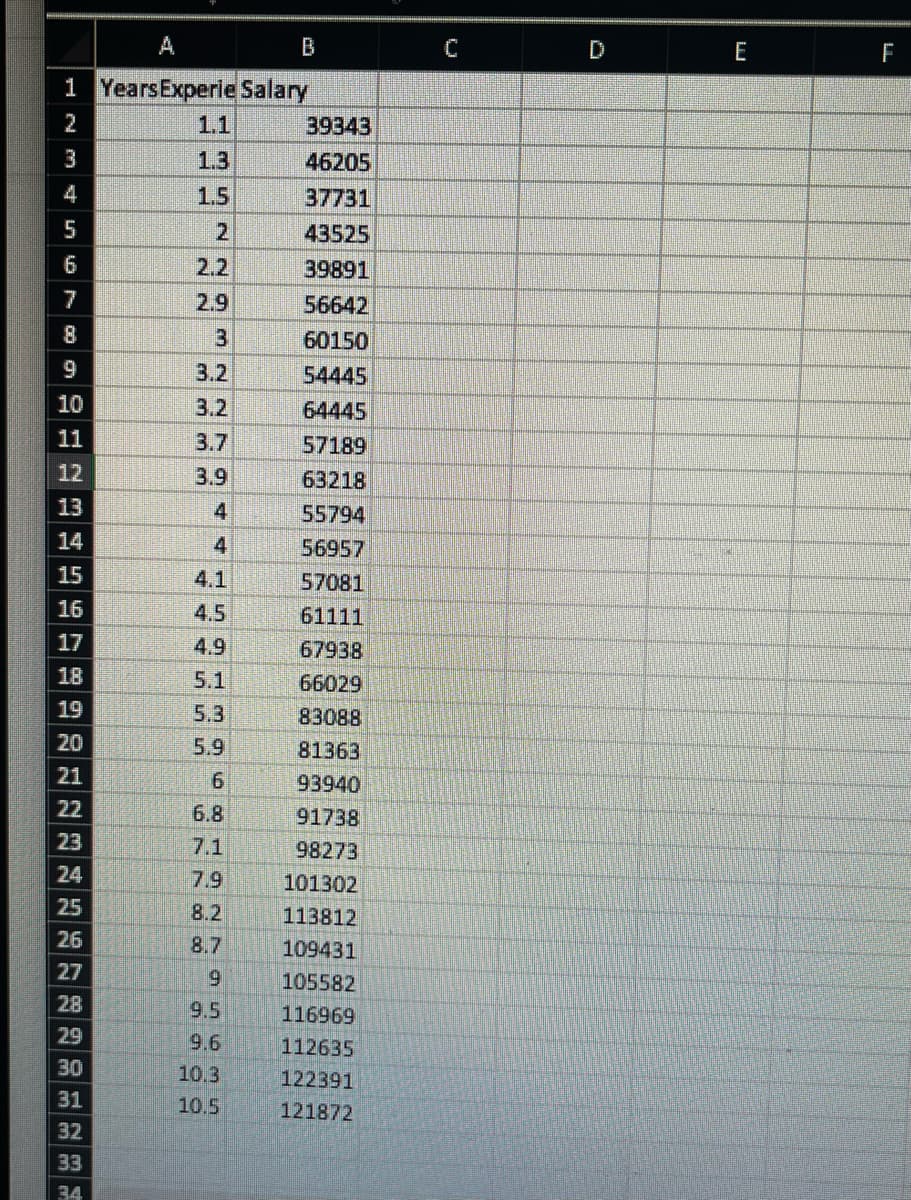This is a coding question. Now that you have worked out the gradient descent and the update rules. Try to progrum a Ridge regression. Please complete the coding. Note that here the data sct we use has just one explanatory variable and the Ridge regression we try to create here has just one variable (or feature). Now that you have finished the program. What are the observations and the corresponding predictions using Ridge? Now, make a plot to showoase how well your model predicts against the observations. Use scatter plot for observations, line plot for your model predictions. Observations are in color red. and prodictions are in color green. Add appropriate labeis to the x axis and y axis and a title to the plot You may also need to fine tune hyperparameters such as Icurning rate and the number ofliterations.
This is a coding question. Now that you have worked out the gradient descent and the update rules. Try to progrum a Ridge regression. Please complete the coding. Note that here the data sct we use has just one explanatory variable and the Ridge regression we try to create here has just one variable (or feature). Now that you have finished the program. What are the observations and the corresponding predictions using Ridge? Now, make a plot to showoase how well your model predicts against the observations. Use scatter plot for observations, line plot for your model predictions. Observations are in color red. and prodictions are in color green. Add appropriate labeis to the x axis and y axis and a title to the plot You may also need to fine tune hyperparameters such as Icurning rate and the number ofliterations.
Related questions
Question
This is a coding question. Now that you have worked out the gradient descent and the update rules. Try to progrum a Ridge regression. Please complete the coding. Note that here the data sct we use has just one explanatory variable and the Ridge regression we try to create here has just one variable (or feature).
Now that you have finished the program. What are the observations and the corresponding predictions using Ridge? Now, make a plot to showoase how well your model predicts against the observations. Use scatter plot for observations, line plot for your model predictions. Observations are in color red. and prodictions are in color green. Add appropriate labeis to the x axis and y axis and a title to the plot You may also need to fine tune hyperparameters such as Icurning rate and the number ofliterations.
![import numpy as np.
import pandas as pd
from sklearn.model_selection import train_test_split
import matplotlib.pyplot as pit
Ridge Regression
class RidgeRegression ():
definit__(self, learning_rate, iterations, 12_penality) :
self.learning_rate learning_rate
self.iterations iterations
self.12_penality 12_penality
Function for model training.
def fit( self, X, Y) 1
#no_of_training examples, no_of_features
self.m, self.n X.shape
weight initialization
self. W np.zeros(self.n)
self.b 0
self.x = x
self. Y Y
gradient descent learning
for i in range ( self.iterations ) :
self.update_weights ()
return self
Helper function to update weights in gradient descent
def update_weights (self):
#you need to figure this out.
return self
Hypothetical function h( x )
def predict( self, X ) :
return X.dot ( self.W) + self.b
#Driver code
def main () 1
Importing dataset
df pd. read_cav( "salary_data.csv")
X df.iloc[:, :-1].values
Ydf.iloc[:, 1].values
#Splitting dataset into train and test set
X_train, x_test, Y_train, Y test train_test_split( X, Y,
Model training
model Ridge Regression ( iterations 1000,
model.fit( X_train, Y_train )
test_size=1/3, random_state = 0)
learning_rate= 0.01, 12 penality=1)
Prediction on test set
Y pred model.predict( x_test )
print("Predicted values ", np.round( Y_pred [:3], 2))
print("Real values ", Y_test [:3] )
Visualization on test set
if_name__ "_main_" :
main ()](/v2/_next/image?url=https%3A%2F%2Fcontent.bartleby.com%2Fqna-images%2Fquestion%2Fc963c9fb-4f92-45b3-8c44-4d6f750b4af1%2F1774a761-8086-415b-be0d-79dac9098709%2Fwisqbhm_processed.jpeg&w=3840&q=75)
Transcribed Image Text:import numpy as np.
import pandas as pd
from sklearn.model_selection import train_test_split
import matplotlib.pyplot as pit
Ridge Regression
class RidgeRegression ():
definit__(self, learning_rate, iterations, 12_penality) :
self.learning_rate learning_rate
self.iterations iterations
self.12_penality 12_penality
Function for model training.
def fit( self, X, Y) 1
#no_of_training examples, no_of_features
self.m, self.n X.shape
weight initialization
self. W np.zeros(self.n)
self.b 0
self.x = x
self. Y Y
gradient descent learning
for i in range ( self.iterations ) :
self.update_weights ()
return self
Helper function to update weights in gradient descent
def update_weights (self):
#you need to figure this out.
return self
Hypothetical function h( x )
def predict( self, X ) :
return X.dot ( self.W) + self.b
#Driver code
def main () 1
Importing dataset
df pd. read_cav( "salary_data.csv")
X df.iloc[:, :-1].values
Ydf.iloc[:, 1].values
#Splitting dataset into train and test set
X_train, x_test, Y_train, Y test train_test_split( X, Y,
Model training
model Ridge Regression ( iterations 1000,
model.fit( X_train, Y_train )
test_size=1/3, random_state = 0)
learning_rate= 0.01, 12 penality=1)
Prediction on test set
Y pred model.predict( x_test )
print("Predicted values ", np.round( Y_pred [:3], 2))
print("Real values ", Y_test [:3] )
Visualization on test set
if_name__ "_main_" :
main ()

Transcribed Image Text:A
1 Years Experie Salary
2
1.1
3
1.3
4
1.5
5
2
6
2.2
7
29
日
gonne 4 5 6 7 8 9 20122824 25 25 27 28 29 30 31 2 33 弘
10
11
12
13
15
16
17
18
19
23
26
32
3.
3.2
3.7
3.9
4
4
4.1
4.5
4.9
5.1
5.3
5.9
6
6.8
7.1
7.9
8.2
8.7
9
9.5
9.6
10.3
10.5
39343
46205
37731
43525
39891
56642
60150
54445
64445
57189
63218
55794
56957
57081
61111
67938
66029
83088
81363
93940
91738
98273
101302
113812
109431
105582
116969
112635
122391
121872
E
F
Expert Solution
This question has been solved!
Explore an expertly crafted, step-by-step solution for a thorough understanding of key concepts.
Step by step
Solved in 4 steps with 3 images
